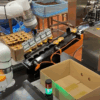On July 26, the opening ceremony of WAIC 2025 was held at the Shanghai World Expo Exhibition and Convention Center. It is the most important annual science and technology event in China’s AI field, which is also one of the vanes of the global embodied intelligence and smart terminal industry. In the 70,000 m2 exhibition area, hard-core exhibits such as embodied intelligence and smart terminals became the absolute protagonists. Robots were no longer just “performance guests” at the booth, but real “protagonists”.
The most eye-catching one was undoubtedly the concentrated appearance of the humanoid robot lineup-more than 150 humanoid robots appeared on the same stage, setting a record for the largest display in China. In the H3 exhibition hall, various robot manufacturers showed their killer weapons, showing off their muscles, competing in technology and landing, forming a diverse and dense “humanoid robot group portrait”.
A group of humanoid robots blooming in all kinds of colors
AGiBOT is still one of the most eye-catching protagonists. At this WAIC, AGiBOT not only had the largest booth (300 m2), but also brought the core members of its three major product lines: “Yuanzheng”, “Lingxi” and “Genie”. Lingxi X2-Pro robot made its debut, with high-difficulty humanoid movements such as jumping and riding a bicycle; Yuanzheng A2-W completed dynamic handling tasks on site, and could even cope with the situation where the box was slightly tilted; Genie G1 handed things, stamped, and played curling at the booth, like a caring assistant. In addition, AGiBOT also displayed the robot dog product D1 Ultra and the partner ecosystem.
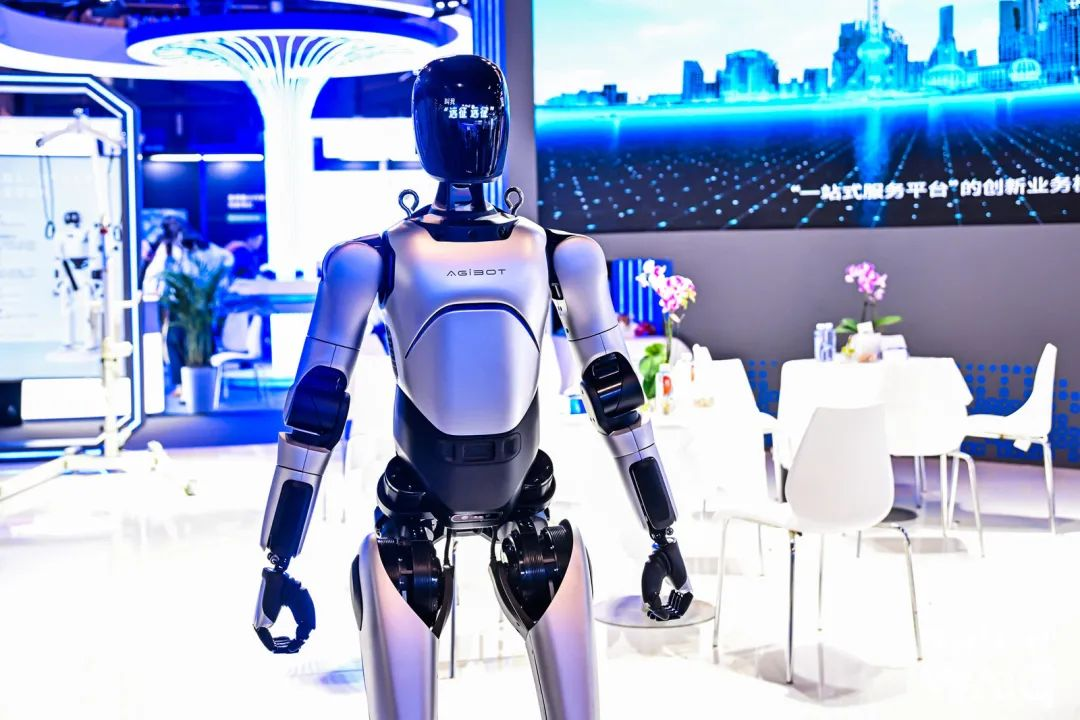
Another popular manufacturer is Unitree. Its robot competition became the “traffic explosion point” of the exhibition area. The two humanoid robots wore boxing protective gear and “fought” head-on, kicking, hitting, and blocking in one go, which attracted the audience to exclaim. On July 25, Unitree officially released the third humanoid robot “Unitree R1”, with a starting price of 39,900 yuan, weighing about 25kg, supporting reform, and integrating voice and image multimodal large models. As the world’s first company to publicly retail high-performance quadruped robots, Unitree has entered the listing guidance stage.

KEENON, which focuses on “service scenario”, turned its booth into a robot theater. In the “tavern” area, XMAN-R1 served as a robot bartender, identifying bottles, pouring wine accurately, and handing cups with both hands; in the theater area, XMAN-F1 independently conducted PPT explanations and product demonstrations, demonstrating multimodal interaction and autonomous decision-making capabilities.
Among companies that attach equal importance to humanoid robot technology and commercialization, Galbot is also not to be ignored. The “C position” of the booth displayed a retail robot based on the VLA model, which could complete the grasping task on randomly placed shelves. Its humanoid robot Galbot guards convenience stores around the clock, and can accurately pick up goods from dense shelves according to customer orders on site. Galbot plans to open 100 unmanned retail pharmacies guarded by robots across the country this year, and has opened nearly 10 in Beijing.
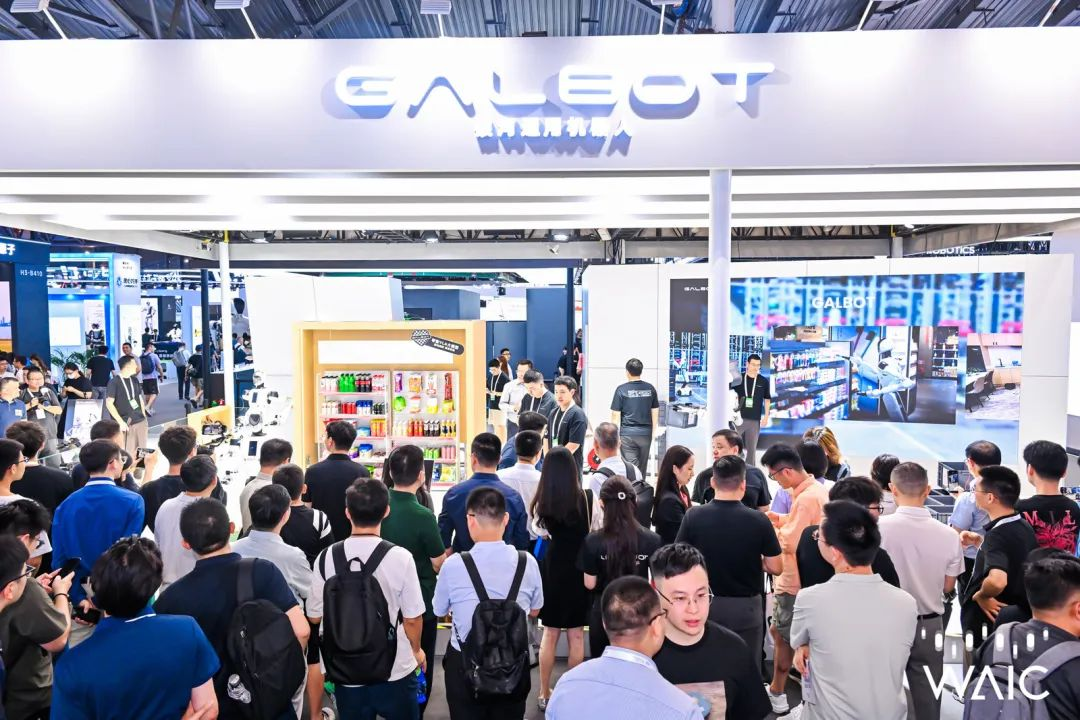
Spirit AI brought the humanoid robot Moz1 built based on the self-developed VLA model Spirit v1. At the booth, Moz1 delivered drinks, organized the desktop, and put out garbage, and its S-shaped bending and active balancing movements were skillful and flexible. In the interactive experience area, the audience could also remotely control Moz1 to play games such as building blocks and walking through mazes. The “almost no delay” feedback was impressive.
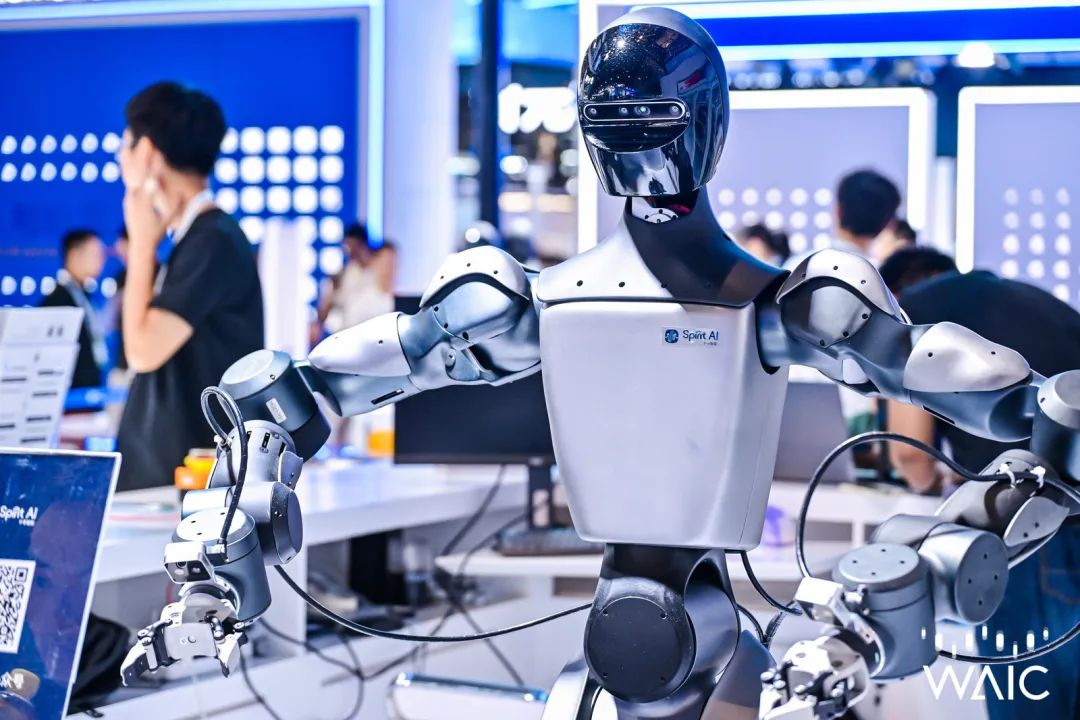
At the ROBOTERA booth, the robot L7 was 171cm tall and weighed 65kg. It could complete high-intensity movements such as 360-degree rotation jumps and street dance breaking, and could also perform fine operations such as scanning codes, clamping labels, and massage. The dexterous hand XHAND1 and the newly released Q5 wheeled humanoid service robot also showed rich application potential.
UniX exhibited the Wanda 2.0 robot, which simulated the entire process of household cleaning, including table tidying, tableware classification, and dishwasher use, and could also perform hand dish drums in the exhibition area.
AI2 Robotics exhibited AlphaBot equipped with a large model of GOVLA, performing professional-level drum performances. It adopted the “fast and slow system” collaboration mechanism to simulate human rhythm understanding and precise tapping.
Beijing Humanoid Robot Innovation Center brought “Tiangong 2.0”, which was upgraded from “the fastest runner” to “better use”, adapted to logistics, packaging, special operations and other scenarios, and continued to promote the open source platform “Tiangong Kaiwu” to support the construction of developer communities at the data set and ontology levels.
Fourier brought the GR series and N1 robots, combined with its data accumulation in the field of rehabilitation equipment, to explore the possibility of humanoid robots in medical and rehabilitation services.
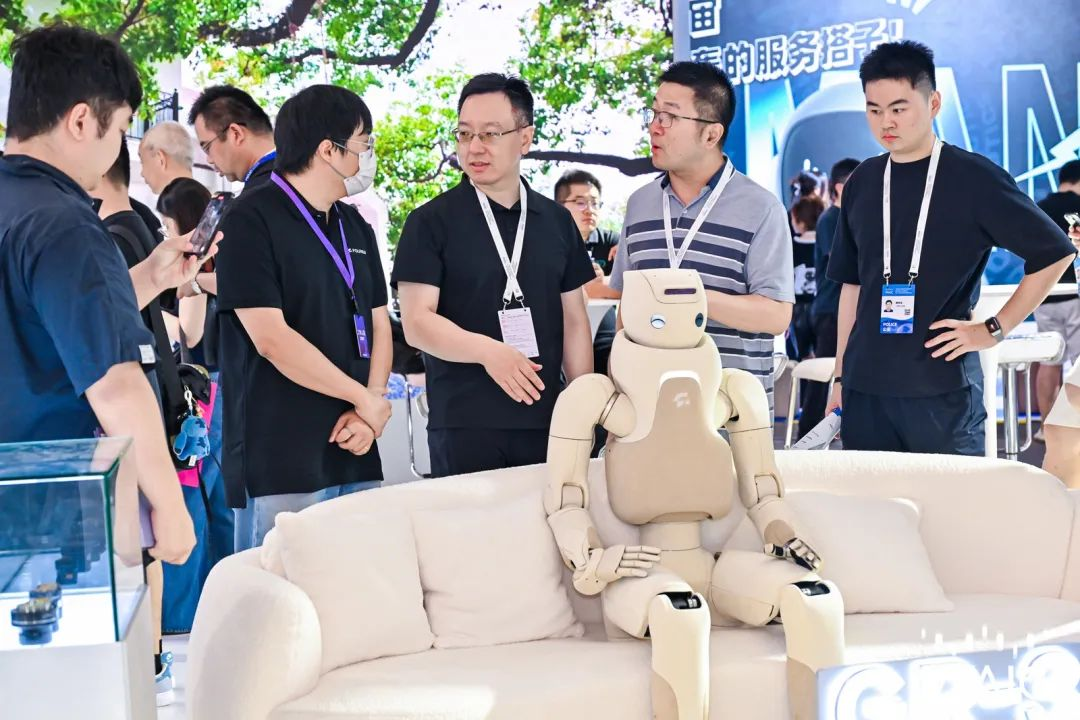
DroidUp‘s “Walker II” was the second runner-up in the humanoid robot half marathon. It highlights lightweight design and tendon drive, focusing on scientific research education, interactive services and other scenarios.
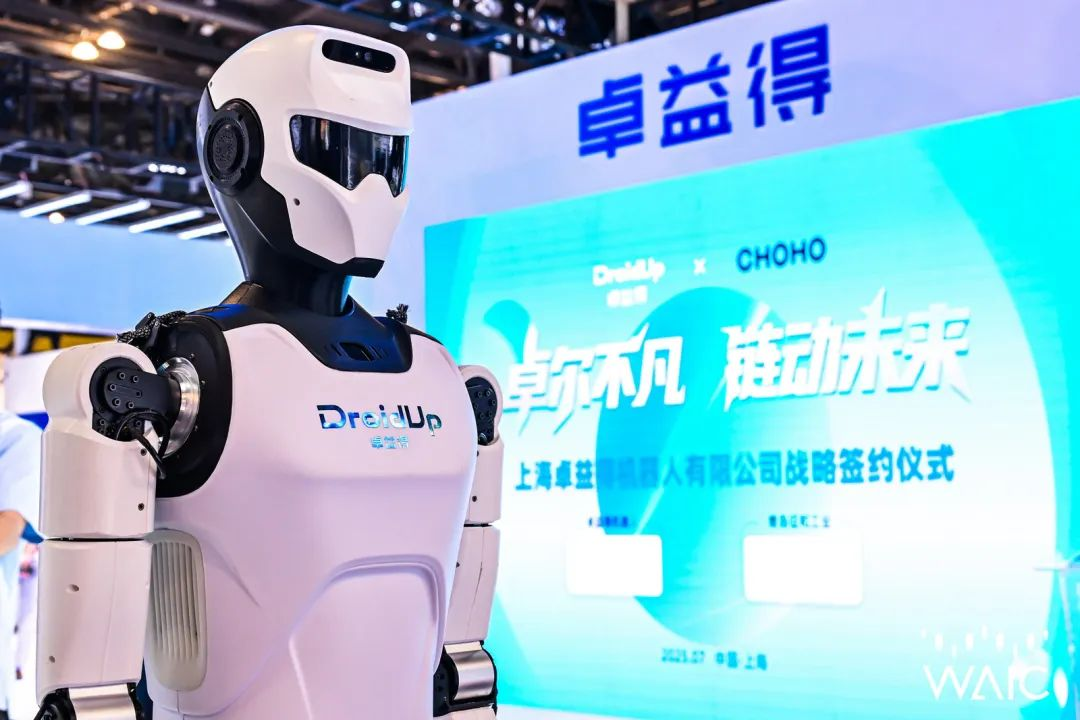
Cyborg brought China’s first heavy-duty robot Cyborg-R01, which is 180cm tall and can carry 20kg of irregular parts. Its technical goal is to overcome high-risk and high-load scenarios.
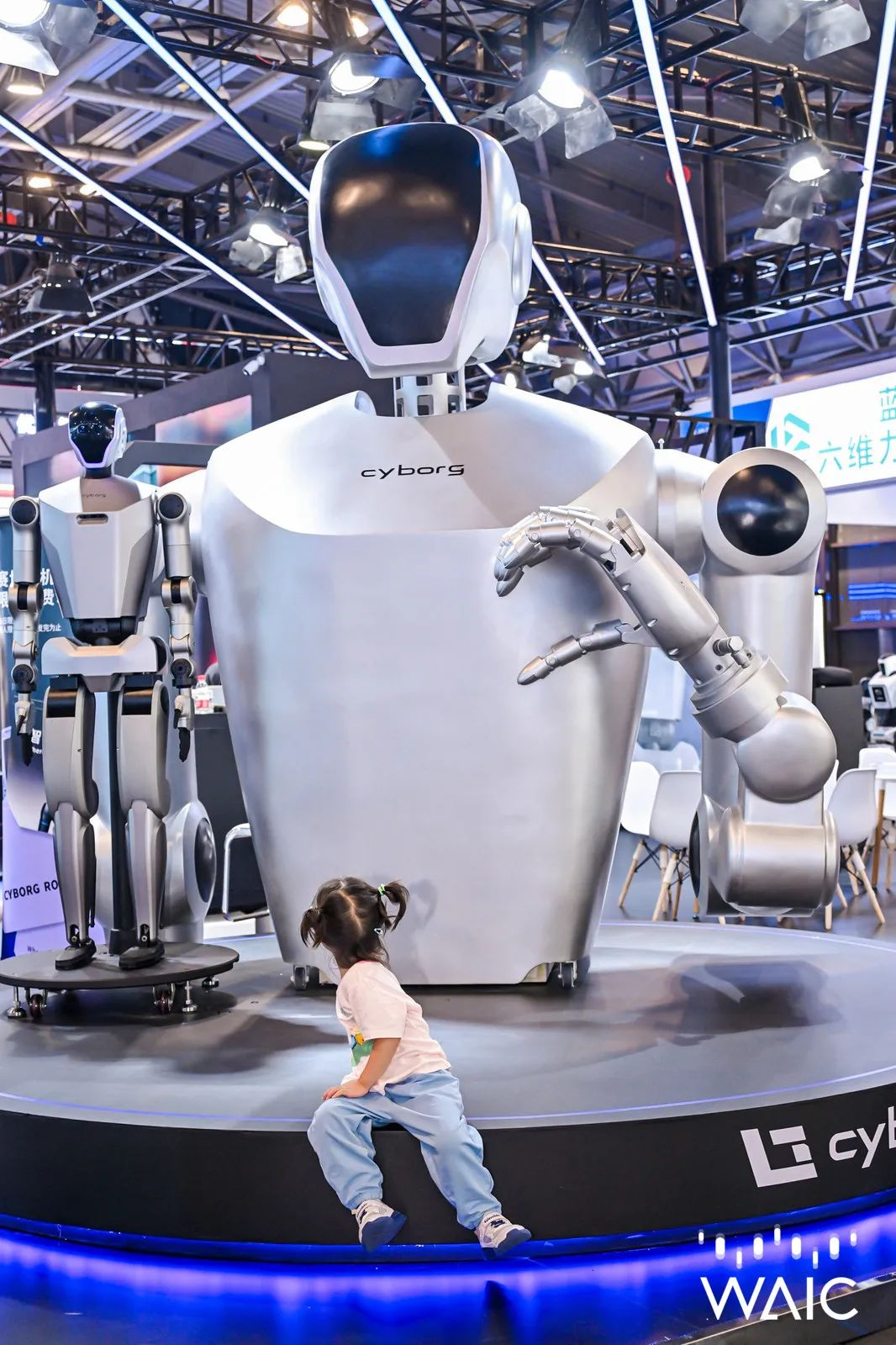
Kepler has been creating humanoid robots with blue-collar work capabilities. Its humanoid robot Forerunner K2, claims to be able to work for 8 hours after charging for 1 hour, capable of completing rough and delicate work, and capable of carrying 25-30 kg with its two arms in a coordinated manner.

New companies such as PsiBot, Magiclab, Leju Robot, CASBOT, SEER, Youibot, Dexforce, X Square Robot, and Realman also demonstrated their innovative exploration in the sub-sectors of industry, rehabilitation, and scientific research.
After the “debut”, where will humanoid robots go?
Although humanoid robots still mostly appear as “performers” in the exhibition hall of WAIC, “practical” humanoid robots are quietly appearing on the booths of more and more manufacturers. From logistics sorting to retail picking, from household cleaning to industrial screwing, these unglamorous actions are the only way for humanoid robots to move towards large-scale application.
From the overall trend, breakthroughs in three directions are the most critical:
First, the early implementation of industrial and logistics scenarios.
Take AGiBOT as an example. The end-to-end embodied robot logistics operation jointly demonstrated by it and Damon is the demonstration closest to the real production line on site. The robot completes the sorting action through code scanning and path planning, with a complete process and efficient action. Galbot deploys humanoid robots to unmanned pharmacies to realize 24-hour drug picking operations, and cooperates with robot dogs to complete environmental inspections and auxiliary tasks. There is also the “Dabai” robot of Puluo Yuzhou, which can lock 4 screws in 12 seconds in disordered workstations, and has preliminary flexible manufacturing capabilities.
The second is the training and iteration of the “long task chain” capability.
This is not only about the ability to understand large models, but also about action planning, stability and strategy execution. For example, Wanda 2.0 of UniX can complete the entire process of home cleaning, and the XMAN series of KEENON realizes the task closed loop in the catering scene of “ordering-making-delivery-collecting meals”, indicating that humanoid robots are moving from “action completion” to “task completion”.
The third is the advancement of human-machine collaboration based on multimodal models.
Whether it is the VLA retail robot of Galbot, the human remote operation experience of Spirit AI Moz1, or the rhythm drum performance of AI2 Robotics‘ “AlphaBot”, the underlying technology is transitioning from rule-driven to the “see-think-move” capability chain. This type of model-driven demonstration may not be fully implemented, but it has already reflected the future direction.
It can be clearly seen from this WAIC that Chinese manufacturers are building their own humanoid robot playing methods and moats.
Some emphasize full-stack self-development, some focus on model algorithms, some are bound to industrial scenarios, some are deeply involved in home scenarios, and some use open source communities to form a technical “circle of friends”. Regardless of their origins, the goal is consistent – from technical feasibility to commercial availability.
Of course, current humanoid robots still face many challenges: cost control has not been optimized, generalization capabilities still need to be improved, and safety and durability need to be verified. But it is undeniable that this generation of robots has completed the initial leap from “being able to stand up” to “starting to work”.
WAIC 2025 is not just a concentrated appearance of humanoid robots, but more like a “collective coming-of-age ceremony” for them. The next battle will be fought in real factories, warehouses, streets and homes.
Note:
Logistics Automation Development Strategy & the 7th International Mobile Robot Integration Application Conference Southeast Asia will be held in Concorde Hotel Kuala Lumpur, Malaysia on 21st August 2025. At the same time, the 2025 Global MobileRobot Industry Development Report will be released. Welcome to join us.
For agenda, please click https://cnmra.com/logistics-automation-development-strategy-the-7th-international-mobile-robot-integration-application-conference-southeast-asia-21st-august-2025-concorde-hotel-kuala-lumpur-malaysia/
For registration, please click https://docs.google.com/forms/d/e/1FAIpQLSdGHjpHRU0mR0_2ZlqtJpUV25s3XlIIHtkkUUfxz0W6vpBqiA/viewform?usp=header


